Spiced Up—Zanzibar Spice Tour
A three-hour-long spice tour in one of the farm/plantations dispersed around the island is a must-do activity. And why not! Not for nothing is this archipelago off the coast of Tanzania is widely known as the spice island.
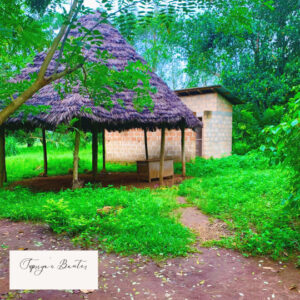
The minivan whisked us off to a spice farm (shamba) in Masingini Forest, teeming with herbs, spices, and condiments I’ve grown up eating. It was a revelation to see so many Indian spices and herbs in their natural, unprocessed states.
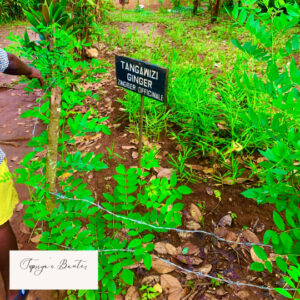
A Method to Madness
After a vociferous exchange of Karibo, Hakuna Matata, and huge smiles, the tour kicked off. The narrow muddy walkaway contorted and curled, resembling a maze more than a spice plantation. But the guide, his trainee, and an assistant knew the tracks like the back of their palm. There was a particular order and a route designed across the lands for one to explore the vast vista in a limited time. Talk about having a method to the madness!
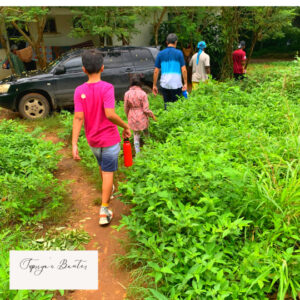
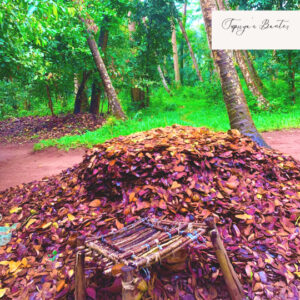
The assistant, Abu, would run off in the boscage, hack a part of the tree or shrub, and hand it over to the lead guide, Rajeb. Then, Rajeb would pass it over to us, encouraging us to crush it between our fingers, smell, taste, feel the texture and guess the spice. The hints ranged from the land of origin, seasons, cultivation methods, and uses.

A Melting-pot of Spices, or cultures?
It turned out that most of the spices were not indigenous to Zanzibar. Portuguese and Omani traders brought many condiments to the island from various regions when the archipelago grew into a central trading hub with suitable weather.
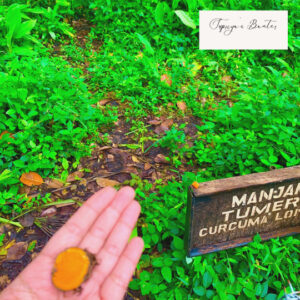
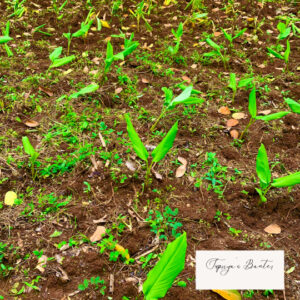
No wonder I found turmeric, curry leaves, and cardamom so widely used in Indian cooking, rubbing shoulders with Indonesian galangal, lemongrass, and cumins. South African Cocoa grew alongside Indian jackfruit, sweet grapefruit, and pomelo from southeast Asia, hobnobbed with African mango, banana, and coconut palms.
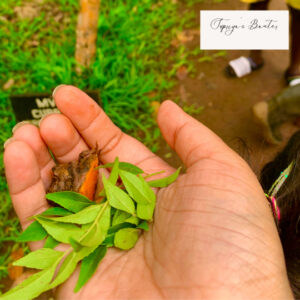
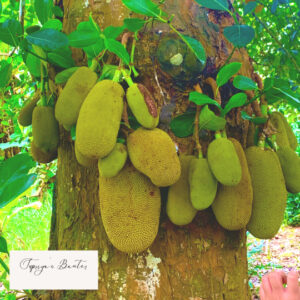
Patches of aloe vera grew alongside vanilla plants, durian, and pepper trees. Abu handed the cinnamon barks and leaves right off a bushy tree. Take a peek into the tour.
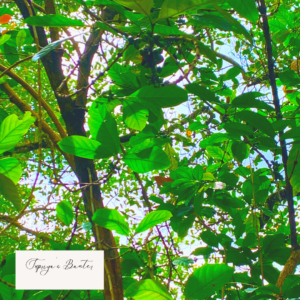
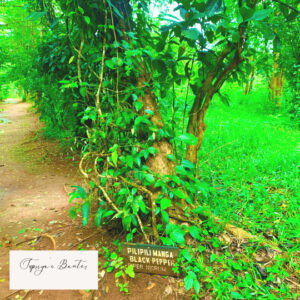
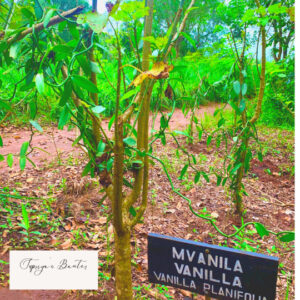
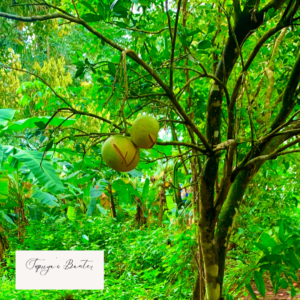
Rambutan trees with bright-red, oval rambutan, litchi-like fruits consorted with pale green ylang-ylang flowering tree.
Making acquaintances with the base note of Chanel No.5
The trainee made us appreciate the potent fragrance of the ylang-ylang flower. Apparently, the flower is credited with the distinctive sensual floral notes of the perfume, such as Chanel No 5. Make acquaintance with the flowering tree.

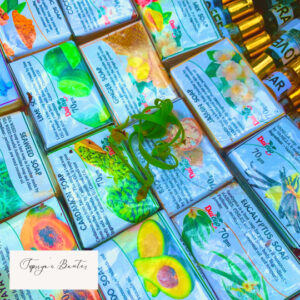
The wild grass growing along the pathway turned out to be lemongrass. No wonder the breeze carried the hint of its refreshing, citrus notes in its fold. Wild Mushrooms propped right beside a fallen tree trunk.
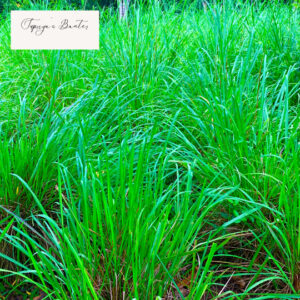
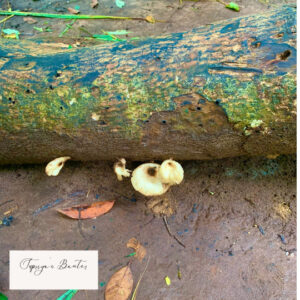
A stall close proffered us soaps, perfumes, and extracts made by women; we grabbed a few as a gesture to support the farm and its community.
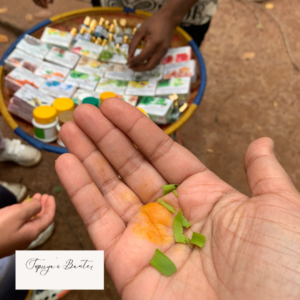
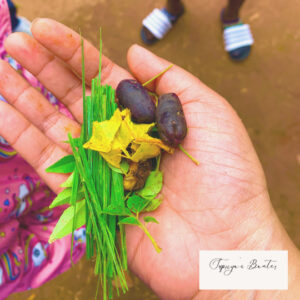
A Masterclass
The tour acquainted me, the city dweller, with how turmeric is grown from rhizomes—fleshy root-like structures or how peppercorns are a slow-growing, woody perennial flowering vine. I learned that white and black peppers originate from the same plant but differ only because of their processing methods.
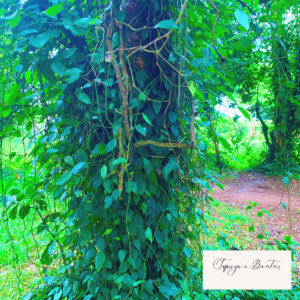
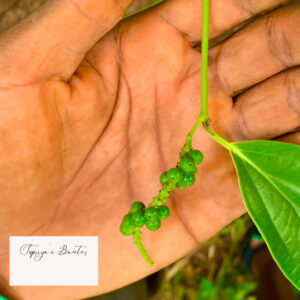
Or how nutmeg is a pendulous apricot look-alike fruit. Rajib split open the flesh, exposing a crimson-hued aril surrounding a single shiny brown seed, the nutmeg.
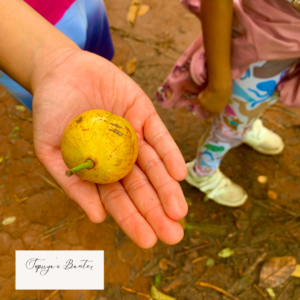
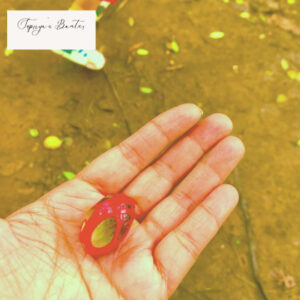
There was wildlife galore.
Snails, centipedes, and millipedes feasted together. Dragon flies, insects, and wasps buzzed around, lolling in the golden glow of the sunshine. Catch a peek at the creepy crawlies.
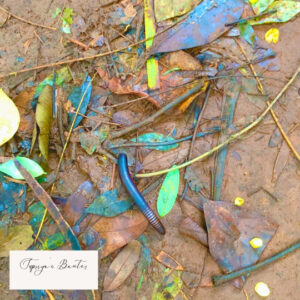
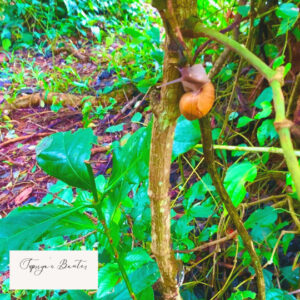
Thanks to the mosquito repellent lotions, sprays, and patches, they sidestepped us, preferring the verdant over us. The Sykes monkey regularly made its presence known by cackling or bounding up in daredevil stunts.
The Highlight
These farms and their myriad crops were maintained for the benefit of tourists. The actual farms are in the interiors, and native farmers keep the quality crops for export.
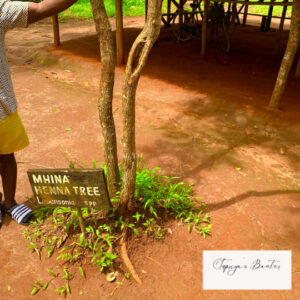
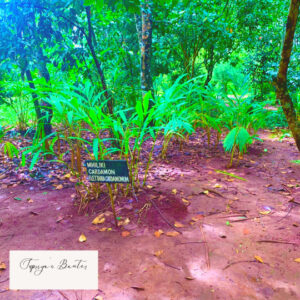
My children amassed all the spoils in a palm-leaf hand-woven basket embellished with a bright red hibiscus, graciously handed over by Abu.
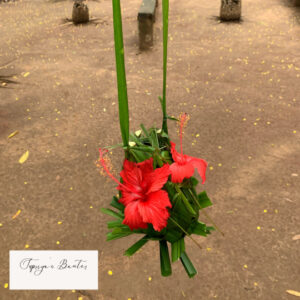
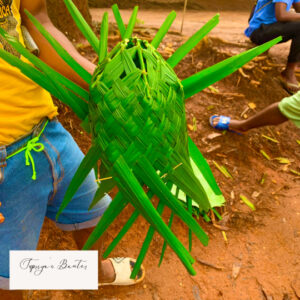
His skills with the leaves were fantastic; we were each presented with plant souvenirs. Catch the amazing weaver in action.
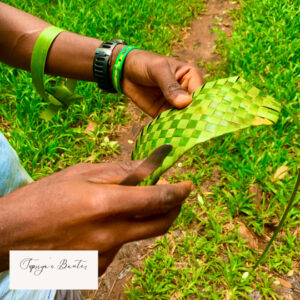
There were necklaces, headbands, wristbands for the girls, ties, and caps for the boys.
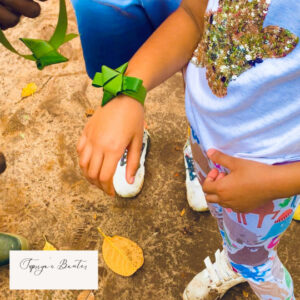

Of course, my daughter, who by this time had chatted up a storm, was presented a floral ring too.
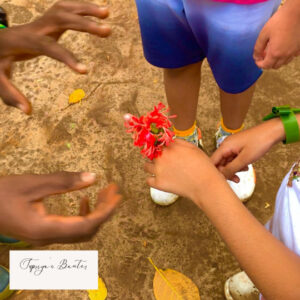
Their smiles widened as the kids oohed-aahed over the flowery accessories.

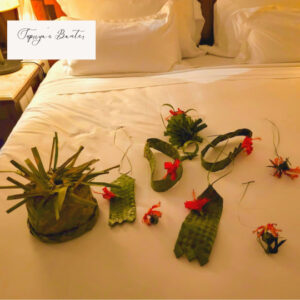
Goodbyes
The tour concluded with us tasting the local fruits—the passion fruits, rambutan, and the African oranges.
A spice shop at the exit showcased freshly packaged spices, curry powders, and a myriad of tea and coffee powders. We picked a few unique-looking packages to take back home.
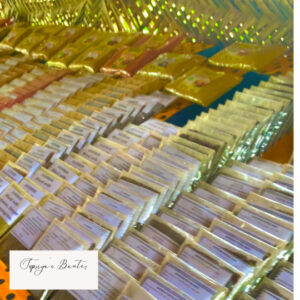
Do I Recommend the Spice Tour?
Yes!
Of course, yes! You can’t miss this delightful tour of flavors, aromas, and textures. The hand-woven palm accessories were the highlight of our day.
Every penny spent on this experience is worth it.

A Few Pointers
Always carry mosquito repellent, sunscreens, and bottled water with you. If it’s monsoon season, bring an umbrella, too; unexpected spells of sudden showers can leave you surprised. But fret not, I found these showers short-lived, just enough to take the edge off the heat.
It’s best to keep smaller denominations of Tanzanian shillings at hand for tipping the local guides, assistants, and trainees.
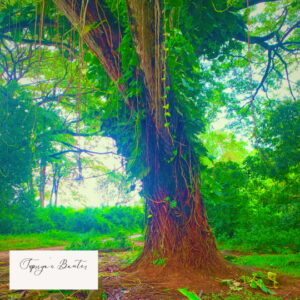
Continue Reading
You can check out my other posts about this beautiful country:
The Residence, Zanzibar-A Paradisial Stay
An Afternoon at a Fishing Village in Zanzibar
Jozani Chawka Bay National Park- A morning in the enchanted forests of Zanzibar
A Rendezvous with the Giant Aldabra Centurions—the Prison Island, Zanzibar
Maalum Caves-Zanzibar’s best-kept secret!
 Supriya's Banter
Supriya's Banter
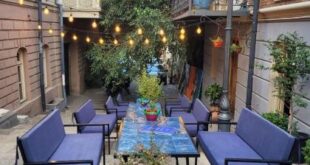

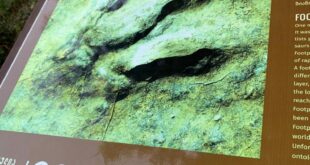


Informative Post
thank you!